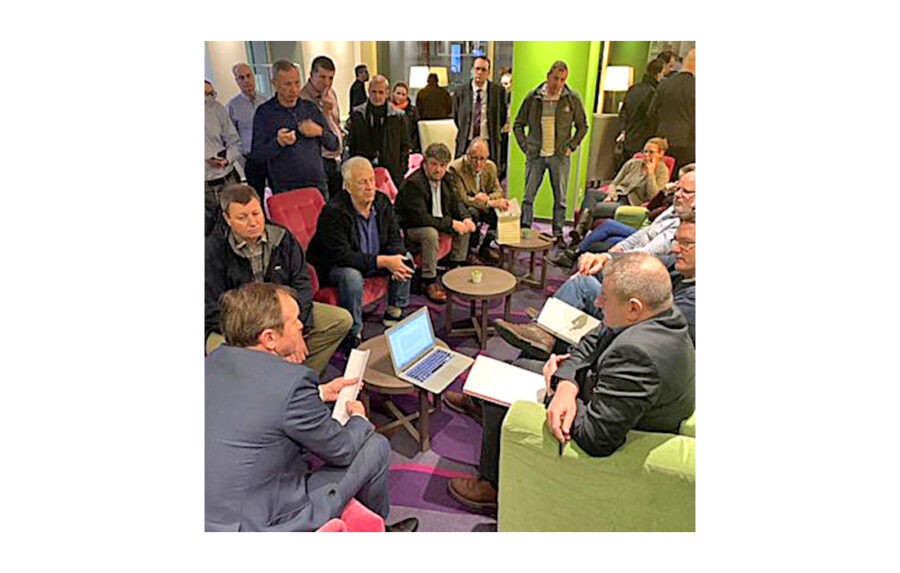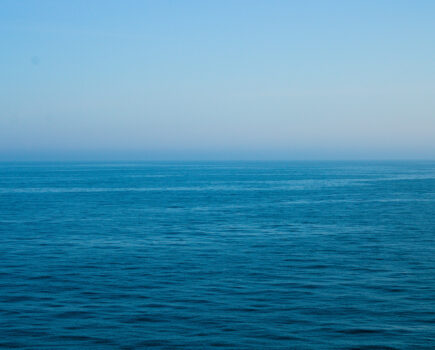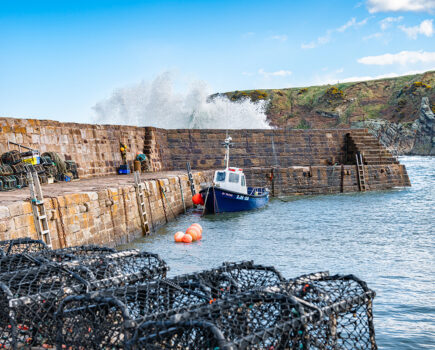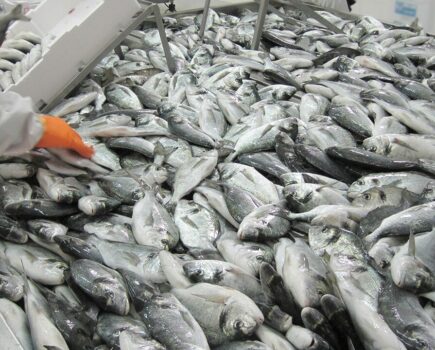Quota cuts in 2020 as MSY dominates Council
Industry eager for freedom from CFP
Many UK fishermen will have smaller quotas in 2020, after last week’s Fisheries Council in Brussels – the last the UK will attend – saw reductions in several major stocks, reports Tim Oliver
A 50% cut in the North Sea cod TAC, agreed between the EU and Norway days before the Council, was the headline figure, but cod in all areas was cut to by-catch levels. There were also cuts in many other species, as the Commission pressed ahead with its aim of achieving MSY for all stocks in 2020.
But, as usual, the Council resulted in a mixed bag, and there were some welcome quota increases (see tables on pages 3 and 7 for details).
The Commission’s determination to achieve MSY for all commercial stocks by 2020 was a defining feature of this year’s Council, and brought strong criticism from the industry.
With Britain set to leave the EU and CFP on 31 January, this was the last Council that the UK will attend as an EU member state.
UK ministers and officials did their best to get a good result for the industry, but the scientific advice was difficult, and as a departing member state, the UK did not have a strong negotiating hand.
Industry leaders expressed relief that while this year will be tough, the UK will soon be free of the CFP for the first time in 40 years, and will be able to cut far better deals as an independent sovereign coastal state from 2021 onwards.
Speaking after the Council, UK fisheries minister George Eustice said: “This year, there has been some very challenging science for cod stocks in many parts of the NE Atlantic, and we have responded to conserve stocks.
“I know that some of the quota reductions will be very difficult for some sectors of the industry, and there has been considerable debate this year about the importance of by-catch allowances to support the delivery of the discards ban. However, we also know that to protect the profitability of fisheries in the future, we must fish sustainably today.
“Some of the problems have been exacerbated by the fact that the EU’s outdated method for sharing quota between member states means that the UK gets a very small share of the cod in our own waters. As we leave the EU and become an independent coastal state, we will be in a position to address the unfairness that is inherent in the CFP.”

NFFO delegates listen to a briefing from UK fisheries minister George Eustice during the Fisheries Council in Brussels.
Marine Scotland said that combined with the recent agreements between the EU and the Faroes and Norway – which were ratified in Brussels – there are ‘a number of challenging outcomes for the Scottish fleet’.
Scottish minister Fergus Ewing said: “With Brexit about to happen, it has been clear that the EU is already prioritising other members over the state about to walk away. That is perhaps unsurprising, but coupled with the challenging scientific advice, it has made this a difficult two days.
“We still managed to secure a final agreement for West of Scotland cod better than the initial proposal, and an increase in North Sea ling. However, I am disappointed that other proposals – particularly those that would have allowed for more sustainable management of fisheries, and better compliance with the landing obligation – were not adopted.
“We worked for a deal that reflects the key principles of the CFP – the need to fish sustainably, while supporting the interests of coastal communities and fishers. Unfortunately, combined with other negotiations, the deal will struggle to deliver this for the Scottish industry.
“Worse, we now potentially find ourselves as a bystander next year, and we have had early indication of how difficult future negotiations might be. Whatever the future holds, I and the Scottish government will continue to champion the interests of Scotland’s fishing industry.”
The UK delegation was led by fisheries minister George Eustice, and also included Scottish minister Fergus Ewing, Welsh minister Lesley Griffiths and representatives from Northern Ireland.
Cornish FPO chief executive Paul Trebilcock said that the UK government team at the Council was ‘amongst the best that we have worked with’.
He said: “There was a solid understanding of our priorities, as well as the challenges and potential implications of different options for South West fishermen. Communication in the run-up to and through the Council was excellent – even if the final outcome was not.”
‘Main burden on Scotland’
At the earlier EU-Norway agreement that was ratified at the Fisheries Council, Fergus Ewing said that the 50% cut in the cod TAC would be ‘very challenging’ for Scottish fishing businesses, and that ‘once again, the main burden has fallen on Scotland’.
“We have significant concerns about a methodology that recognises poor cod stocks in the southern North Sea, but seems to disregard much healthier numbers in northern waters. We will press for action to address this,” he said.
The EU-Norway talks agreed on seasonal closures to protect North Sea cod while it is spawning in the first quarter of the year. A new EU-Norway working group, that will develop further management measures in early 2020 to reduce catches of cod to promote stock recovery, was also set up.
“Scotland will lead on developing a package of measures with international partners to make the reductions in quotas easier to manage,” said Marine Scotland.
‘Relentless’ focus on MSY blamed for TAC cuts
The NFFO slammed the Commission’s relentless concentration on cutting TACs in pursuit of attaining MSY for all stocks in 2020.
“It is fair to say that this Council was the point at which European fisheries policy succumbed completely to the one-dimensional politics of posture,” said chief executive Barrie Deas after the Council.
“An unrelenting focus on the single MSY objective, and along with it a wilful disregard for consequences in the real world, characterised the Commission’s approach this year.
“This collapse into gesture politics is not an adequate substitute for a viable, balanced and effective fisheries policy, and was opposed to different degrees by all member states with fisheries interests. It was also opposed by Norway, the EU’s most significant partner in the management of shared stocks.”
He said that the Council was also the point at which the drafting of the Western Waters multi-annual plan, adopted a little over a year ago, was found to be ‘unfit for purpose’.
“Throughout the negotiations, the Commission asserted that its hands were tied by a rigid interpretation of the CFP’s legal framework. Whether this is true or not, it provided cover for a very tough negotiating platform,” said Barrie Deas.
“Although, in the final hours, compromises were made, the Commission could blame member states for forcing them off the road of true CFP purity. This was all about optics, rather than what actually works in fisheries management terms.
“In the meantime, the member states and the fishing industry, who both, in their different ways, have to deal with the real-world consequences of these decisions, did their best to find workable solutions.”
He said that cod, in all CFP sea areas, is showing signs of stress, with warming sea temperatures and a changing ecosystem likely to be among the principal reasons. “The management regime has yet to catch up with this development.”
The NFFO chief said that the ‘elephant in the Council room’ was the EU landing obligation.
“Sooner or later, after its architects have all left the stage, it will be formally acknowledged that the landing obligation was a spectacular blunder which was misguided in conception, inadequate in design and impossible to implement without radical amendment.
“Until that point is reached, it will, along with other legislative measures adopted in 2013, as part of the CFP reform, pose a threat to the stability of the fisheries management system, which prior to that date had made steady progress towards sustainable harvesting of our main fish stocks.”
Cornish FPO chief Paul Trebilcock said that there was some good news from the Council, with increased South West quotas for monkfish (+7%) and megrim (+3%), and rollovers for pollack, ling and saithe in Area 7. However, a reduction of 21% in the western hake quota was a disappointment, given the ongoing healthy status of the stock.
“The cut was another reflection of the Commission blindly following its MSY rainbow whilst ignoring the wider impacts/consequences for the fishery as a whole, and for fishing communities,” he said.
On Celtic Sea cod, he said that the UK was ‘isolated, and fighting through the night to resist the Commission’s hard-line proposals on both the TAC and its desire to implement poorly drafted technical measures’.
He said: “The Commission deliberately ignored the fact that cod represents much less than 1% of catches in all the diverse fisheries in the South West. It is only caught as an unavoidable by-catch when targeting other species.”
Andrew Locker, NFFO chairman elect, said that the 50% reduction in the North Sea cod TAC could be ‘really problematic’ for the North Sea fishing industry, depending on the abundance found on the grounds next year. There is also scope for chokes in the haddock and whiting fisheries, he said.
“The North Sea fishing industry had taken the initiative in proposing an integrated package of rebuilding measures, but a 50% reduction in the TAC will make it more difficult to arrive at a workable package that the industry can support.
“It will be of the utmost importance that the industry is involved in the design and implementation of the new arrangements, which will include spatial, technical and control measures.”
Main UK quota changes by region at a glance
As well as the headline -50% cut in North Sea cod, there were also significant cuts in cod quotas in the Irish and Celtic seas and West of Scotland, after scientific advice showed concern for the health of fish stocks in many areas.
Limited quotas to allow the landing of accidental by-catch were agreed for cod in these areas. West of Scotland cod was cut by 26%, in line with the scientific advice.
“To further protect vulnerable cod stocks, the UK has successfully pushed for enhanced rules on sustainable fishing practices, such as changing net sizes, to help the iconic cod make a recovery,” said DEFRA.
There were significant cuts in 25 of the main stocks, but there were also sizeable increases in 12 important stocks.
| North Sea
Cod (including 7d) -50% Haddock +23% Monkfish -30% Turbot and brill -28% Irish Sea Cod -88% Haddock -16% Whiting -42% Plaice -14% Sole +12% Herring +17%
|
Wider Area 7
Nephrops -15% Cod 7 (except 7d) -64% Haddock +30% Whiting -51% Herring 7ghjk -83% Plaice 7de -12% Plaice 7hjk -42% Plaice 7fg +23% Sole 7d +11% Sole 7e +19% Sole 7hjk -14% Sole 7fg +56% Sprat 7de -43%
|
Widely distributed stocks
Hake 6,7 -21% Hake 4 -21% Blue ling 4 -40%
West of Scotland Cod 6a -26% Haddock 6a +23% Whiting -24% Herring -17% Monkfish -30% Cod 6b (Rockall) -37% Pollack -40%
Other stocks Mackerel 4 +37% Mackerel 6,7 +41% Horse mackerel 4,6,7 -42% |
Figures are provisional and may be subject to change








